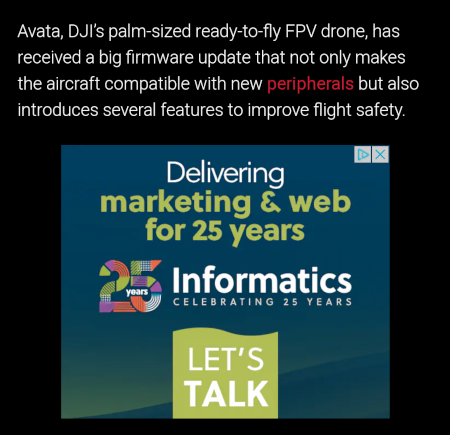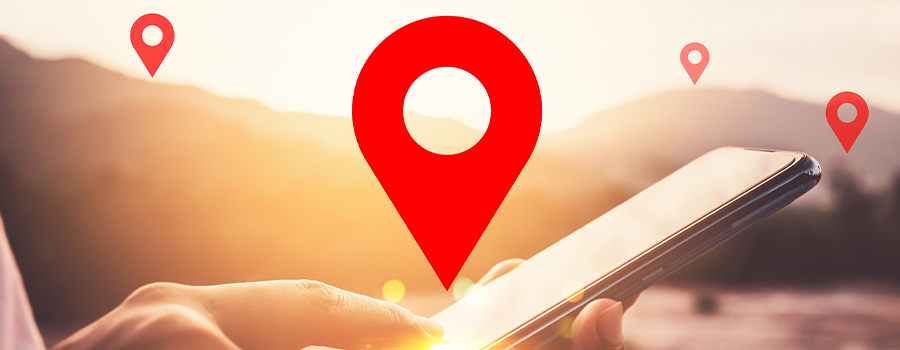Digital marketing is all about reaching customers and potential customers where they are, and ideally when they’re in a receptive state of mind.
Where is that magical place today? On their phones, of course.
We all have phones these days, and we’re spending more time on them than ever—about 5 hours a day, according to one global survey. We use our phones for communication, information, entertainment and more, making them a literal hub for our lives. That’s why it makes sense to leverage tech that allows us to reach users on the small screen.
Here at Informatics, we use a variety of tools to accomplish that, from search and display ads to video and connected TV, but one of our most targeted tools is geofencing.
What is geofencing advertising?
Geofencing is a location-based technology that allows advertisers to create a virtual boundary around a specific geographic area, whether that’s a building, a city block or even an entire city.
When users with a mobile device enter that geofence, their device is detected and logged using GPS and other location-based technologies. Once a user has been identified, the advertiser can place targeted ads in various places:
- Pop-up, display and interstitial ads in mobile apps
- Display inventory on websites served by the geofencing platform
- CTV and OTT ads for use on video streaming platforms
Below is an example of a geofencing ad appearing in a mobile browser from a past Informatics campaign.
Your ideal user can be defined by location, demographics and other factors, so you can avoid just broadcasting your mobile ads to people who won’t respond.
Even better, once a person has viewed or engaged with your geofencing ad, their information can be saved to create lookalike retargeting audiences.
That can keep your brand top of mind after a customer has left your location, and boost your overall conversion rates by doubling down on customers who have already expressed an interest in your brand.

How can I use geofencing ads for marketing?
Geofencing ads are tailor-made for marketing strategies that rely on a customer’s specific location. How can you use them to boost your business?
- Draw in customers from nearby areas or neighborhoods
- Target customers at a tradeshow or event, and sending them to a booth or a landing page
- Capture your competitors’ customers with ads triggered around their locations
For example, a restaurant might use geofencing to target users who are within a few blocks of their location. When a user enters the geofenced area, they might receive a notification on their mobile device offering a discount or a special deal if they come to the restaurant. This type of targeted advertising can be highly effective because it reaches users who are already in the area and may be more likely to visit the business.
When users click on your geofencing ad, it’s a good idea to send them to a landing page that’s been optimized and tested. Whether it’s an email signup in exchange for a special deal or the opportunity to download a whitepaper, make sure you’re capitalizing on customer interest and driving engagement.
How is geofencing sold and measured?
Much like other forms of display advertising, geofencing is sold by the thousands of impressions, known as CPM. Advertisers may pay $5-$20 CPM for geofencing ads, and upwards of $50 per 1,000 video impressions for CTV and OTT platforms. That stacks up well with other forms of display advertising, and is a big reason geofencing is becoming such a common tactic among marketers.
Note that densely populated areas are ideal here. To recognize and log a user’s device, they must be using it within your geofenced area; if you’ve layered on additional demographic or audience qualifiers, you’ve reduced your potential audience even further. That’s why we generally recommend geofencing big neighborhoods, highly trafficked locations and big industry tradeshows to get the most bang for your buck.
When it comes to quantifying your campaign performance, some of the top metrics to watch include:
- Impressions: A measure of how many total ads were served up over the course of the campaign, regardless of unique users
- Reach: How many unique devices received ads as part of your campaign
- Conversions: How many people take a desired action, such as placing a phone call, filling out a form, or making a purchase online
- CTR: The percentage of impressions resulting in a click to a website or landing page. A rough industry average to watch for geofencing ads is 0.55%; a CTR below that could indicate issues with your campaign setup or targeting.
Don’t worry if all of this seems a bit overwhelming—we’re here to help! If your brand is ready to add geofencing to your marketing strategy, just reach out. Our digital experts are ready to get you closer to your customers.
Ready to really get in front of your customers?
Our marketing experts are ready to put geofencing tools to work for your brand.

